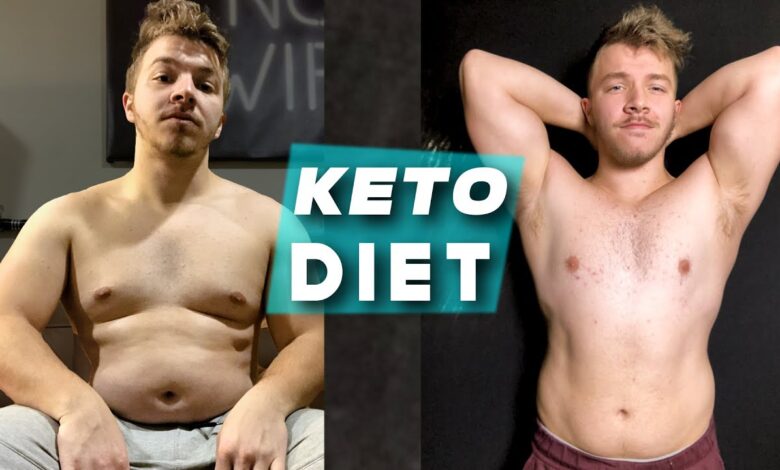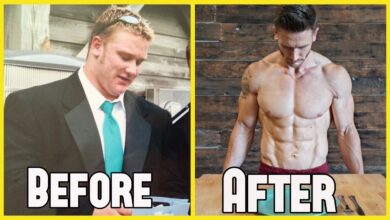Top 10 Keto Weight Loss Transformations You Must See – Dramatic Success Stories & Lessons

Embarking on a weight-loss journey can feel like stepping into the unknown. For so many of us—whether in Africa, the United States, Europe, or anywhere else—the promise of change is both thrilling and intimidating. The keto (ketogenic) diet has gained worldwide fame for delivering dramatic results, and rightfully so. But what truly motivates us is the transformation: real people, real stories, real change. In this article, we’ll dive deep into ten incredible keto weight-loss transformations you must see. We’ll unpack the before-and-after stories, the lessons they teach, and how you can apply them to your own life.
So if you’re ready to be motivated, inspired, and equipped with actionable takeaways, let’s get started.
Read Also Mastering Keto: 8 Proven Tips to Break Through Keto Weight Loss Barriers
1. From 250 lbs to 160 lbs: A U.S. Mom’s Keto Journey
Imagine waking up every morning, frustrated at the reflection in the mirror and exhausted before your kids even get out of bed. That was Jessica’s story in Ohio, USA. She was weighing around 250 pounds, juggling a full-time job, two children, and the constant guilt of “not doing enough.” When she started the keto diet, she didn’t just swap foods—she swapped a mindset.
Jessica cut her net carbs to under 30 grams a day and replaced sugary snacks with avocado, eggs, and cauliflower rice. Within the first month she lost 18 pounds—her energy soared, and she stopped craving cola at lunch. Over 12 months she hit 160 pounds—an astonishing 90-pound transformation.
What stands out? She didn’t do this alone. She joined a Facebook keto support group, logged every meal in an app, and celebrated small wins (like being able to climb the stairs without getting winded). Her biggest lesson: consistency beats perfection. One off-day didn’t ruin her journey—it taught her how to bounce back.
If you’re in the U.S. and feel overwhelmed, remember Jess’s story: the transformation started with one good meal, then another. It’s not about being perfect every day—it’s about showing up for yourself.
2. A European Software Engineer Goes Keto and Loses 45 kg
In Berlin, Germany, meet Markus—a 38-year-old software engineer who spent years behind screens, snacking mindlessly, and skipping the gym. At his heaviest he weighed around 115 kg (≈253 lbs). He decided to try keto after watching one YouTube video that said “fat won’t make you fat, sugar will.”
Markus switched to a high-fat, low-carb diet: olive oil, fatty fish, full-fat yoghurt (yes, the full-fat kind!), and greens. He tracked his ketones with a simple breath meter and noticed his hunger nearly vanished. Over nine months, he lost 45 kg (~99 lbs) and now hovers around 70 kg.
What made it click? Two things: he automated the process (meal-prepped freezer bags with keto breakfasts) and friends at work joined him, turning it into a social challenge rather than a lonely grind. For European readers, his tip is golden: adapt the diet to local staples—cheeses, full-fat yoghurts, local fish—and you’ll stay committed.
Markus’s transformation shows that you can succeed even with a tech-heavy lifestyle. The secret wasn’t screentime—it was thoughtful meals and community.
3. From Ghana to the Gym: Breaking Through 100 kg on Keto
Here’s a story closer to home. In Accra, Ghana, meet Kwame—a young man who weighed over 100 kg and felt invisible in his own skin. He tried every diet trend: high-carb local staples, fasting, even juice cleanses—but nothing stuck. Then he stumbled on the keto concept: low carbs, moderate protein, high healthy fats.
He replaced his regular fufu and banku meals with cauliflower-banku mash, eggs with avocado, and coconut oil cooking. Within six months, he dropped to 82 kg—an 18-kg loss (~40 lbs). His community noticed: friends at the gym cheered him on, and he started sharing his meals on Instagram, creating his own support tribe.
What can you learn? That local adaptation matters. Kwame didn’t import American meals—he adapted his Ghanaian favorites to keto. He also used movement (gym sessions) to help—not because it’s mandatory, but because it kept his mindset strong.
If you’re in Ghana or anywhere in Africa, you don’t need imported foods. You need creativity and consistency.
4. UK Office Worker’s Rapid 6-Month Transformation
In London, UK, Sarah was stuck in a sedentary office job, snacking on biscuits and sugary lunches. She weighed 85 kg (≈187 lbs) and faced the dreaded “office-chair-butt.” And started keto with a simple rule: no sugar, no refined carbs. She swapped sandwiches for keto wraps, fizzy drinks for sparkling water plus lemon, and had bacon-and-spinach breakfasts.
In six months she lost 22 kg (~49 lbs). Her energy soared, mood improved, and she even ran a 5k fun-run for the first time. Her key takeaway: the first two weeks are the hardest (keto flu, cravings), but once you pass that hump you unlock momentum.
UK readers: use her “keep it simple” motto. Buy your foods in one-stop supermarket visits, prep snacks in advance, and don’t overcomplicate meals.
5. Canadian Dad Shakes Off 60 lbs with Keto & Strength Training
In Toronto, Canada, Tom found himself 38 years old, 260 lbs, and avoiding mirrors. His waking thought? “How did I get here?” He decided: enough. He adopted keto, but added strength-training at the gym 3 times per week. Steak, buttered broccoli, heavy cream coffee—they became regular.
Over 11 months, he lost 60 lbs (~27 kg) and gained visible muscle definition. He says the weight loss happened first, but the definition and confidence grew with the gym. He also tracked progress with photos, not just numbers on a scale.
Takeaway: Combine keto with movement if you want not just to shed weight but reshape your body. Canada, US, UK—same principle applies: fat-burning plus muscle-building equals transformation.
6. South African Teacher’s Keto Success: From 110 kg to 75 kg
In Cape Town, South Africa, meet Maria—a high school teacher who weighed 110 kg (~242 lbs). She felt tired after teaching morning classes, drained by lunchtime, and avoided photos. She turned to keto with a twist: she included local foods like boerewors (in moderation), chakalaka with cauliflower rice, and plenty of leafy greens.
Over 10 months, she not only hit 75 kg (~165 lbs) but found herself leading her class in Zumba sessions. Her energy soared, her confidence in class increased, and she started a small lunchtime fitness group with colleagues.
Lesson: Using familiar foods keeps the diet sustainable. If you’re in Africa or anywhere with strong local cuisines, adapt rather than abandon your culture.
7. German-American Entrepreneur: 100 lbs Lost, Business Boosted
This story spans continents. Anna, originally from Berlin, moved to the U.S., weighed 240 lbs (~109 kg), and felt her personal brand was stuck—she wanted to launch a business but lacked energy, confidence, and focus. She discovered keto and within a year lost 100 lbs (~45 kg).
Her productivity surged; meetings felt less draining; she even pitched investors with a smile. She says: “When my brain fog cleared, the business ideas started flowing.” She emphasizes that keto isn’t just about diet—it’s about clarity, momentum and transformation inside and out.
For entrepreneurs or professionals: the weight-loss is a bonus; the mental edge can be the real game-changer.
8. Irish Nurse Battles Night-Shift Weight; Keto Wins
In Dublin, Ireland, Kelly was a nurse working night shifts, grabbing snacks on the fly, and struggling against the scale reading 95 kg (~209 lbs). She switched to keto and structured her meal-prep around her shifts: a hearty omelette pre-shift, nuts and cheese snack mid-shift, and a light salad dinner.
Within eight months she reached 68 kg (~150 lbs) and says her sleep-quality improved, energy improved, and she felt less drawn to sugary “comfort” foods after tough shifts. Her key habit: “If I had carbs, I’d crave more carbs. So I stopped the chain.”
Lesson: Shift workers, healthcare professionals, or busy folks: keto can fit into irregular hours—just commit to planning.
9. French Retiree Discovers Keto, Gains Vitality & Loses 30 kg
In Lyon, France, Pierre was 65, retired, and weighed 110 kg (~242 lbs). He thought his time for change had passed—but he was wrong. He adopted keto, focused on cheese, eggs, buttered greens, and minimal bread. Over nine months he lost 30 kg (~66 lbs). More importantly, he regained vitality, played with his grandchildren, and felt more alive than he had in decades.
For older readers: keto isn’t just for the young. Age is no barrier. With the right approach, transformation is absolutely possible.
10. Australian Student’s Rapid Flip: 80 kg to 55 kg on Keto
In Sydney, Australia, Emily was a university student juggling part-time work, stress, and a scale reading of 80 kg (~176 lbs). She decided to try keto for 12 weeks as a “experiment” and ended at 55 kg (~121 lbs)—a 25 kg (~55 lbs) drop. She emphasizes: “I treated it like a study project. I measured, I tracked, I reviewed my results weekly.”
She used apps to log meals, joined online keto forums, and shared progress on Instagram—creating accountability. Her mindset: “Data + community = momentum.” Aussie students or anyone in high-stress environments can take note: support systems magnify success.
Why These Transformations Matter
You’re probably wondering: “Okay, great stories—but what can I learn from them?” Good question. The value is in the patterns, the principles, and the practical takeaways. Across these ten stories, a few themes keep repeating:
Consistency Over Perfection
None of these people were perfect every meal, every day. What they did was show up. They fell off, got back on. That’s all it took.
Local Adaptation
Whether in Ghana, South Africa, Germany, or the U.S., all these people adapted keto to their culture—local foods, local habits. You don’t need imported fancy meals—you need smart swaps.
Support & Accountability
Online groups, friends joining in, gym buddies—they made it social rather than solitary. Turning a diet into a community activity changes the game.
Mindset Shift
They didn’t view keto as a punishment or a fad—they saw it as a tool for their bigger life: energy, clarity, consciousness, confidence.
Measurement & Tracking
Many used apps, measurements, photos, even ketone breath-meters. Tracking progress made change visible and motivating.
How To Translate These Stories Into Your Journey
Let’s turn inspiration into action. Here’s how you can apply the lesson of these transformations:
Step 1: Set a Clear, Personal Why
Why do you want loss? For energy? To keep up with your kids? To feel confident? Write it down. The stronger the personal reason, the more you’ll persist.
S 2: Choose Your Starting Metrics
Before you begin, take photos, measurements, weigh yourself. These become your before. Later you’ll love looking back.
S. 3: Adapt Keto to YOUR Food Culture
If you’re in Kumasi or Accra, look at your local staples and ask: what low-carb version can I make? Cauliflower fufu? Egg-based breakfasts? Use what’s familiar.
S. 4: Build a Support System
Join online keto groups (Facebook, Reddit), or get a friend to join you. Create accountability. Celebrate small wins weekly.
S. 5: Track Progress & Adjust
Use a simple app or spreadsheet: calories, macros (carb <30–50 g/day typical), weight, energy levels. If progress stalls, tweak: maybe more fat, less stress, better sleep.
S. 6: Don’t Neglect Movement
As many transformations show, adding physical activity helps the transformation—not only for weight loss but for body shape and stamina.
S. 7: Culture-Shift, Not Quick-Fix
Treat this as a lifestyle switch, not a temporary fix. As soon as you see results, reinforce habits so they stick.
Common Challenges & How They Were Overcome
Challenge: Keto Flu & Cravings
Several of our case-studies experienced the infamous “keto flu”—tiredness, headaches, irritability. They overcame it by increasing water, electrolytes, and quality fats (e.g., avocado, olive oil). Once that passed, cravings dropped dramatically.
Challenge: Social Pressure & Food Temptations
Dinner parties, family gatherings, work events were common hurdles. The successful people prepared a plan: bring a keto-friendly dish, eat before the event, or simply sipped sparkling water while others indulged. They didn’t isolate—they strategized.
Challenge: Plateaus
After initial rapid loss, many hit a plateau. The trick? They switched the game: adjusted macros, added strength training, or changed calorie intake. They didn’t give up—they refined.
Challenge: Maintaining Results
Transformation is one phase; maintenance is another. Some kept using their tracking tools, others transitioned into a more liberal version of keto. They kept the low-carb foundation but allowed flexibility so the lifestyle remained sustainable long-term.
What the Science Says (In Simple Terms)
While we’re keeping this conversational, it’s useful to know the science behind why keto transformations happen. The ketogenic diet shifts your body from burning glucose (carbs) to burning ketones (fat). That means two things: fewer spikes in blood sugar (good), and more steady energy. Many people report less hunger, more clarity, and bigger bursts of activity.
Research supports that, when done correctly, keto can lead to significant weight loss, improved metabolic markers (like blood sugar and lipids), and better appetite control. What matters most is adherence: the best diet is the one you can stick to. So when our ten transformations stayed consistent, their bodies responded.
Signs You’re On the Right Track
- Your hunger drops. You’re no longer longing for sugary snacks every hour.
- Your energy becomes more stable—no afternoon crashes.
- You notice inches lost before just weight: clothes feel looser, you see difference in the mirror.
- You’re thinking more clearly. Our friend Anna found her business ideas flowed once her keto brain fog lifted.
- You can maintain social life without derailing. You have a plan. You’re not hiding.
If you’re seeing those signs, you’re in the territory of transformation.
When to Be Cautious
- If you have serious medical conditions (e.g., diabetes, kidney issues) talk to a healthcare provider. Keto is powerful but not always simple.
- If you’re overly obsessive about numbers and macros, you might create stress—which paradoxically slows progress.
- If you’re not eating enough quality food (real fats, vegetables, proteins), you might feel drained.
- If you use keto as a “quick fix” rather than lifestyle adaptation, you might rebound. The transformations we saw viewed keto as a long-term tool, not a temporary diet.
Real Transformation Takeaways for You
- Pick one story above that resonates with you (region, lifestyle, background).
- Write down two habits they used that you can realistically adopt this week.
- Make a simple meal-prep for tomorrow: eggs with avocado, leafy greens and olive-oil dressing.
- Join a keto group or find a friend to hold you accountable.
- Set a mini-goal: lose your first 5 kg (or whatever your unit) or feel confident walking upstairs without winded.
Transformation is not magic—it’s daily decisions. One meal, one step, one habit. Then another. Before you know it, you’ve built momentum.
Conclusion
The ten transformations we just explored show one thing clearly: the journey of weight-loss—especially with the keto diet—is deeply personal, yet universally accessible. Whether you’re in the U.S., Europe, Africa, or anywhere else, the core principles remain the same: adapt to your culture, build your support, track your progress, and stay consistent. These aren’t just stories—they’re proof that change is possible.
Now it’s your turn. Pick up the inspiration. Choose your why. Draft your plan. And remember: the hero of the story isn’t the diet—it’s you. The transformation doesn’t happen overnight, but with patience and persistence, you’ll look back one day and barely recognize the “before.” And you’ll be proud.
Read Also Mastering Keto: 10 Powerful Ways to Revive Your Keto Weight Loss Journey
Frequently Asked Questions
Q1: Is the keto diet safe for everyone?
A1: Generally, yes for healthy adults—but not universally. If you have medical conditions like severe liver or kidney disease, or are pregnant or breastfeeding, you should consult a healthcare professional before starting keto. It’s important to adapt the diet to your body, and to monitor any adverse symptoms early on.
Q2: How quickly will I see results like the stories above?
A2: Everyone’s body is different. Some of those featured saw major change in 6-12 months. Early weight loss (2-4 kg) in the first few weeks is common, but dramatic transformations take time. The key is consistency, not overnight miracles.
Q3: I live in Africa (or another region with little “keto food” availability). Can I still succeed?
A3: Absolutely. As seen in the Ghana and South Africa examples, adapting local staples is vital. Use eggs, local fish, avocados (if available), cauliflower or other local low-carb vegetables. You don’t need imported fancy foods.
Q4: Will I have to exercise intensely to see results?
A4: Not necessarily—it depends on your goals. Many of the transformations added movement (gym, running, Zumba) to accelerate results and improve body composition. But even without heavy exercise, diet alone can produce significant weight-loss. The exercise is a power-booster.
Q5: How do I maintain the weight-loss after I reach my goal?
A5: Maintenance is about shifting from “diet mode” to “lifestyle mode.” You could liberalize your carbs slightly, keep protein and fiber high, stay active, and keep tracking occasionally. Many of our stories maintained their results by staying in tune with their bodies, staying consistent, and not going back to their old habits.





One Comment